![]()
![]()
![]()
Use LEFT and RIGHT arrow keys to navigate between flashcards;
Use UP and DOWN arrow keys to flip the card;
H to show hint;
A reads text to speech;
133 Cards in this Set
- Front
- Back
|
CHAPTER 31:
|
FUNGI
|
|
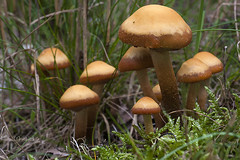
Characteristics of Mushrooms
|
1) 100,000 species (1.5 Mil spa. may actually exist)
2) Found in Every Terrestrial Habitat 3) Single Cell To multicellular 4) Heterotrophic |
|
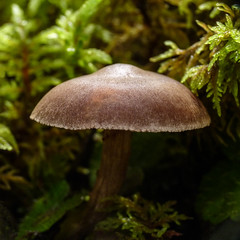
Function Of Mushrooms:
|
1) Breaks down organic material while recycling nutrients back into the ecosystem
2) Source of products from Food to Antibiotics 3) Some are pathogenic to plants & Animals |
|
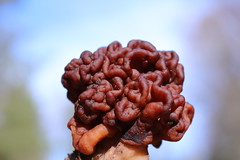
Nutrition & Ecology of Fungi
|
1) Heterophs that DO NOT ingest food.
2) Absorbs Nutrients and external environment 3) Uses enzymes to break down complex molecules into smaller more absorbable molecules. |
|

Hyphae
|
Network or tiny Filaments Consisting of tubular cell walls surrounding the plasma membrane and cytoplasm
|
|
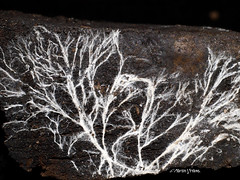
Mycelium
|
interwoven Mat of Hyphae
1) Infiltrates materials on which it feeds 2) Maximizes surface area 3) Grows Rapidly 4) Extends hyphae into area into areas that are more nutritious |
|
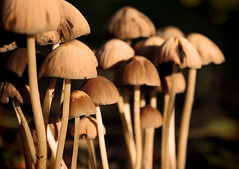
Chitin
|
strong, but flexible nitrogen containing polysaccharide found in the cell walls of fungi
a) Plant cell walls contain cellulose b) Arthropod (insects) exoskeletons contain chitin |
|
|
Septum
|
porous cross-wall that divides hyphae into cells
|
|
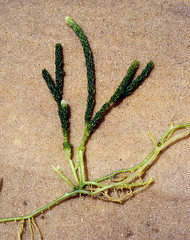
Coenocytic fungi
|
fungi without septa; consist of a continuous cytoplasmic with hundreds or thousands of nuclei
|
|
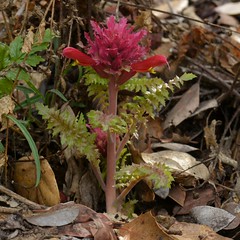
Haustoria
|
specialized hyphae used to extract nutrients or exchange nutrients with hosts (parasitic and mutualistic)
|
|
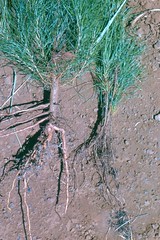
Mycorrhizae
|
specialized hyphae which develop a beneficial relationship between fungi and plant roots
a) Increase surface area of roots and enhancing uptake of water and minerals b) Receive food from plants |
|

Fungi reproduction: Spores
|
a) Produced during sexual/asexual reproduction
b) Released in vast numbers c) Travel great distances by wind/water |
|
|
Fungi reproduction: Sexual
|
a) Nuclei, hyphae, spores are haploid
b) Hyphae release pheromones - Opposite mating types of hyphae grow towards each other and fuse upon contact c) Plasmogamy: fusion of cytoplasm of cells from 2 individuals d) Heterokaryon: fungal mycelium that contains 2+ haploid nuclei per cell e) Dikaryotic: fungal mycelium with 2 haploid nuclei per cell – one from each parent f) Karyogamy: haploid nuclei from each parent fuse producing diploid cells |
|
|
Plasmogamy
|
fusion of cytoplasm of cells from 2 individuals
|
|
|
Heterokaryon
|
fungal mycelium that contains 2+ haploid nuclei per cell
|
|
|
Dikaryotic
|
fungal mycelium with 2 haploid nuclei per cell – one from each parent
|
|
|
Karyogamy
|
haploid nuclei from each parent fuse producing diploid cells
|
|
|
Reproduction: Asexual
|
a) Unicellular fungi (yeast) reproduced by simple cell division (binary fission)
b) Filamentous fungi (molds) that produce haploid spores by mitosis c) Deuteromycetes: yeasts and filamentous fungi with no known sexual stage |
|
|
Lineages of Fungi: Chytrids
|
1. Single celled and colonial
2. Decomposers, parasites and mutualists 3. Ubiquitous in lakes and soils 4. 1,000 spp |
|

Zygomycetes
|
1. Multicellular
2. Mold, parasites, commensalists 3. Grows on foods (bread mold) 4. 1,000 spp |
|
|
Glomeromycetes
|
1. Multicellular
2. Mutualists 3. Grows in 90% of all plant roots 4. 160 spp |
|
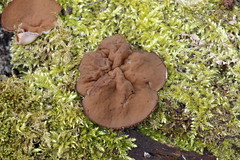
Ascomycetes
|
1. Unicellular/multicellular
2. Decomposers, pathogens, mutualists 3. Marine, freshwater terrestrial habitats 4. 65,000 spp |
|
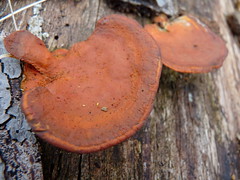
Basidiomycetes
|
1. Multicellular
2. Decomposers, pathogens, parasites and mutualists 3. 30,000 spp |
|
|
deuteromycetes
|
This class of artifically grouped fungi have no sexual reproduction and are consequently called the Fungi Imperfecti because their life cycles are "imperfect"
|
|
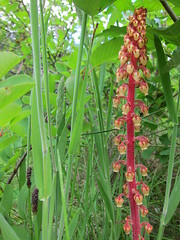
Saprophytes
|
Organisms that feed on dead and decaying organic material
|
|
|
Endophytes
|
Fungi that live in plant parts other than roots without causing harm
1. Produce toxins 2. Defend against pathogens 3. Increase tolerances i. Heat ii. Drought |
|
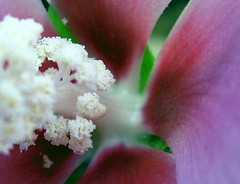
Mutualists
|
Fungus Animal
Fungus- Plant Fungus Algae |
|
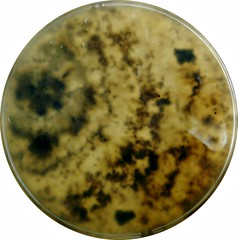
Endophytes
|
Fungi that live in plant parts other than roots without causing harm
|
|
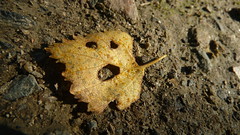
Pathogens
|
30% of fungi are pathogenic/parasitic to plants
|
|

Commercial Uses
|
1. Food
2. Medicine 3. Yeast 4. Decomposers 5. Research 6. mycorrhizae |
|

Lichens
|
Symbiotic relationship between a fungus and an algae or cyanobacterium
a) Fungi provide habitat, algae provide food b) Pioneer organisms c) 13,500 spp |
|
|
CHAPTER 32
|
ANIMAL DIVERSITY
|
|
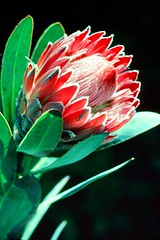
Heterotrophic
|
ability to ingest and digest food with enzymes (ALL ANIMALS ARE HETEROTROPHIC)
|
|
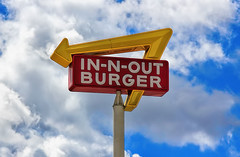
FOOD
|
living organisms or non-living organic material
|
|
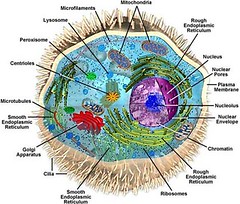
Cell structure
|
1. Specific cell structure with specialization
2. Cells held together by proteins 3. Intracellular junctions keep cell in close contact with each other 4. Two cell types unique to animals a) Muscle cells b) Nerve cells |
|
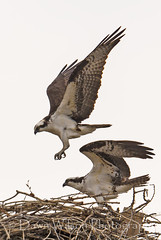
Animal reproduction and development
|
1. Most animals reproduce sexually
2. The diploid stage (2n) is dominant a) Haploid sperm + haploid egg = diploid zygote |
|
|
Cleavage
|
series of mitotic divisions without cell growth between cycles
|
|
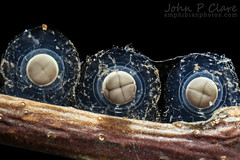
Blastula
|
Hollow ball of cells
|
|
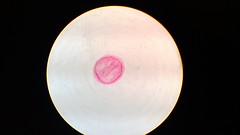
gastrula
|
Solid ball of cells that give rise to embryonic tissues
|
|

Larva
|
sexually immature from of an animal, morphologically distinct from the adult
i. Different diet ii. Different habitat |
|
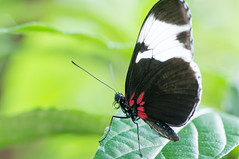
Metamorphosis
|
resurgence of development transforming the larva into an adult
|
|
|
Homeobox genes (HOX GENE)
|
180 nucleotide gene sequence within homeotic & developmental genes; widely conserved in animals
a) Hox genes determine the form, number, and evolution of repeating parts such as the number and type of vertebrae in vertebrates |
|
|
characteristics of hox genes
|
1. Evolved in eukaryotic line
2. Play a role in embryonic development 3. Control expression of 100s of genes 4. Control cell division and differentiation 5. Regulate the formation of water channels in sponges 6. Regulate the patterning of anterior and posterior axis |
|

Cambrian explosion
|
1. Dramatic acceleration of animal diversification 542-525 mya
2. Oldest fossils of approximately half the extant animal spp occurred at this time |
|
|
Reasons for Cambrian explosion
|
1. Predator v. prey relationships developed
2. An increase in atmospheric oxygen occurs 3. Evolution of the hox gene complex resulted in greater flexibility in evolution of new spp |
|
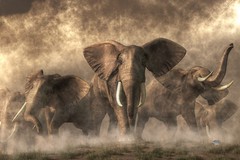
grades
|
Groups of animals that share the same level of organizational complexity
Example: Pachyderms |
|
|
Body Plans
|
set of morphological traits that define a grade, integrated into a functional whole (organism)
example: mammoth and mastodon |
|
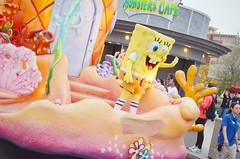
Asymmetry
|
Absence of body plan
Example: Poriferans (sponges) |
|

Radial Symmetry
|
body plan in which arms radiate from the central axis
Example Jellyfish |
|

Bilateral Symmetry
|
body plan in which a sagittal plabe divides the organisms into left and right halves which are mirror images
Example: Humans |
|
|
Cephalization
|
concentration of sensory organs and central nervous system in anterior head
Example: most invertebrates, all vertebrates |
|
|
Tissues
|
Collection of isolated cells kept separated by membranous layers; Arise during embryonic development by gastrulation
|
|
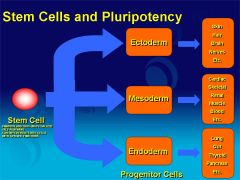
Types of Tissue
|
1) Ectoderm: outer layer giving rise to outer covering and nervous system
2) Endoderm: inner layer giving rise to lining of digestive tract and organs 3) Mesoderm: middle layer giving rise to blood, bones and muscle |
|

Coelom (body cavity)
|
fluid-filled sac separating the digestive tract from the outer body wall; develops from mesoderm
|
|
|
Coelomates
|
animals that from a true body cavity
Examples: mollusks, annelids, arthropods, echinoderms, chordates |
|
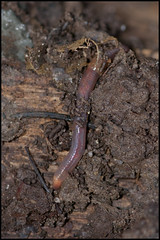
Pseudocoelomates
|
animals that from a false body cavity; from blastocoel, not mesoderm
Example: roundworms |
|

Acoelomates
|
animals with no body cavity
Example: flatworms |
|
|
Functions of body cavities
|
a) Cushion suspended organs in fluid
b) Provide shape and support in invertebrates c) Allow internal organs to move independently outterwall |
|

Protostomes
|
1. Mouth arises from blastopore
2. Spiral cleavage of embryo occurs 3. Body cavity splits between solid mass of mesoderm 4. Examples: mollusks, annelids, arthropods |
|
|
Deuterostome
|
1. Anus arises from blastopore
2. Radial cleavage of embryo occurs 3. Body cavity forms from out-pockets of mesoderm 4. Example: echinoderms and chordates |
|
|
CHAPTER 33
|
INVERTEBRATES
|
|
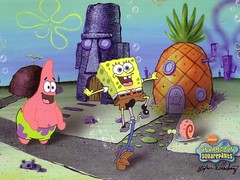
Sponges Characteristics
|
a) Suspension feeder: captures food particles suspended in water that pass through it; non-motile
b) Asymmetric c) Lack true tissue d) Size= few mm – few m |
|
|
Sponge anatomy
|
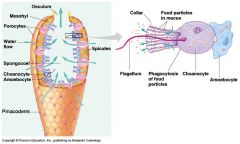
|
|
|
Sponge reproduction
|
a) Hermaphrodite: each sponge functions as both sexes during reproduction
b) Sequential hermaphroditism: sponge functions first as one sex, then the other |
|
|
Cnidarian anatomy
|
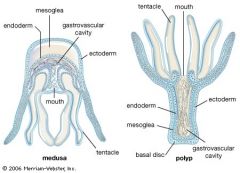
jellyfish
|
|
|
Platyhelminthes (flatworm) anatomy
|

a) Triploblastic
b) Acoelomates c) Sinlge-opening gastrovascular cavity d) Gas exchange, waste elimination by diffusion |
|
|
Platyhelminthes (flatworm) characteristics
|
a) Free living and parasitic
b) Dorsoventrally flattened c) Marine, freshwater inhabitants d) Microscopic – 20 m long |
|
|
Turbellarians
|
i. Free living predatory & saprophytic
ii. Ciliated movement on a film of mucus iii. Light-senstive eyes, chem-sensitive ears iv. Asexual/sexual reproduction |
|
|
Tapeworms
|
i. Parasitic on vertebrates
ii. Hermaphroditic – gonas in proglottids iii. Scolex with suckers/hooks for attachment iv. No gastrovascular cavity – nutrition by absorption |
|
|
Rotifer characteristics
|
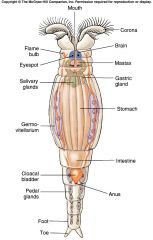
a) Crown of cilia creates vortex of water for feeding where pharyngeal grind up food
b) Alimentary canal with mouth and anus c) Marine, freshwater inhabitants d) 5 – 2.0 mm in length |
|
|
Rotifer reproduction
|
a) Parthenogenesis: reproduction in which offspring develop from unfertilized eggs
b) All female c) Bdelloidea – became asexual 35 mya |
|
|
Cnidarian characteristics
|
a) Carnivorous, sessile & free-floating
b) Radial symmetric c) True tissues d) Size = few mm – few m |
|
|
Parthenogenisis
|
Reproduction in which offspring develops from unfertilized eggs
|
|
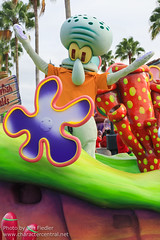
Mollusca characteristics
|
a) Soft – bodied animals, most protected by a shell of calcium
b) Marine, freshwater, terrestrial c) Includes snail, slugs, oysters, clams, octopuses, and squid |
|
|
Mollusca reproduction
|
a) Most have separate exes with gonads
b) Many snails are hermaphroditic c) Larval stage of many marine mollusks include a trochophore and veliger |
|
|
Mollusca diversity: Gastropods
|
(75% of mollusks spp)
a) Marin, freshwater, terrestrial b) Most with a shell and distinct head c) Herbivores and carnivores |
|
|
Mollusca diversity: Bivalves
|
a) Marine and freshwater
b) Hinged shells, no distinct head c) Sessile filter-feeders |
|
|
Annelida characteristics
|
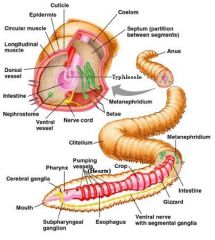
a) Segmented worms
b) Marine, freshwater, terrestrial c) 1mm – 3.0 m in length |
|
|
Oligochaetes
|
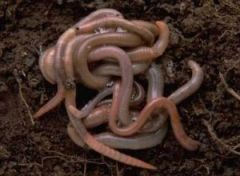
(earth worms)
i. Chaetae: ventral bristles made of chitin ii. Hermaphroditic iii. Ingest soil and extract nutrients iv. Clitellum: secretes mucous cocoon that slides along the worm picking up eggs and sperm, depositing it in soil. |
|
|
Annelida diversity:Polychaetes
|
(sand worms)
i. Each segment has a pair of parapodia that generally function in locomotion ii. Each parapodium has several chaetae – more numerous than in oligochaetes iii. Mostly marine – planktonic, pelagic, crawlers, burrowers, tube dwellers |
|
|
Annelida Diversity: Hirudineans
|
(leeches)
i. Predatory & parasitic ii. Blade-like teeth/ enzymes break skin iii. Anesthetic/anticoagulant secreted iv. Engorges itself on blood up to 10x own weight, but won’t eat again for months |
|

Echinoderms characteristics
|
a) Spiny skin covering an endoskeleton of hard calcareous plates
b) Slow-moving or sessile marine spp c) Water vascular system that function in locomotion, feeding & temp. regulation |
|
|
Lophophores
|
horse-shoe to circular crown of ciliated oral tentacles
|
|
|
CHAPTER 34
|
VERTEBRATES
|
|
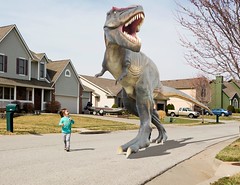
Bilaterian
|
member of a clade of animals with bilateral symmetry and three germ layers
ex: t-rex |
|
|
Deuterostrome
|
organisms in which the anus develops from the blastopore, radial cleavage occurs in the embryo, and the body cavity develops as outpockets of mesodermal tissue
|
|
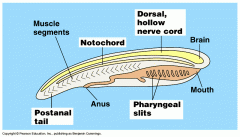
Derived chordate characteristics
|
1. Pharyngeal slits or clefts
a) In aquatic vertebrates (sharks, fish) – gas exchanging gills b) In terrestrial vertebrates (reptiles, birds) – ear development and other structures in the head and neck 2. Dorsal, hollow nerve cord: unique to vertebrates; develops from ectoderm into drain and spinal cord 3. Notchord: long flexible rod present in chordate embryos, some adults, but usually replaced by a jointed skeleton for muscle attachment 4. Post-anal tail: a tail containing muscle and skeletal elements extending beyond the anus; provides propulsion in fish |
|

tunicates
|
1. Oldest lineage of chordates
2. Resemble motile larva chordate 3. Swim to substrate and settle, then lose chordate characteristics |
|
|
Lancelets
|
1. Adults retain the chordate traits
2. Musculature is similar to fish 3. Feed by burrowing into substrate with only their anterior end exposed |
|
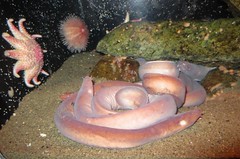
Craniates
|
chordate with well-defined heads
ex: hagfish |
|
|
Derived characteristics of craniates
|
1. Gills slits in aquatic craniates
2. 2+ chambered heart; red blood cells with hemoglobin 3. Higher metabolism 4. Greater musculature 5. Kidneys |
|
|
Major classes of chordates
|
1. Agnatha
2. Chondrichthyes 3. Osteichthyes 4. Amphibian 5. Reptilia 6. Aves 7. Mammalia |
|

Agnatha
|
a) Cartilaginous skull, but lack vertebrae, jaws
b) Segmented muscles c) Scavengers and parasites d) 65 spp, marine & freshwater e) 60 cm in length |
|
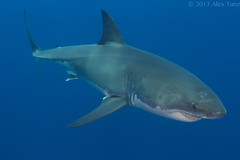
Chondrichthyes (Sharks & Rays)
|
General Characteristics of sharks:
a) Cartilaginous skeleton impregnated with Ca b) Streamlined body built for speed, though not very maneuverable c) Predatory d) 750 spp, mostly marine e) Buoyancy due to large oily liver |
|
|
Nutrition
|
a) Large sharks tend to be suspension-feeders
b) Multiple rows of self-regenerating teeth c) Short digestive tract with a spiral valve increases surface area while slowing digestion |
|
|
Sensory Organ
|
a) Electroreceptor system (unique)
b) Sharp senses of vision and smell c) Lateral line system |
|
|
Reproduction
|
a) Internal fertilization
b) Male claspers transfer sperm into the female reproductive tract c) Females lay eggs (oviparous) d) Eggs hatch in the uterus (ovoviviparous) e) Young are born live (viviparous) |
|

Osteichthyes (Bony Fish)
|
a) Bony endoskeleton
b) Buoyancy in water due to swim bladder c) Skin is covered with scales over which mucus is secreted d) Lateral line, but no electroreceptors |
|
|
Reproduction
|
a) External fertilization
b) Oviparous |
|
|
Osteichthyes (Ray-finned fishes)
|
a) Fins are supported by long, flexible rays modified for defense and maneuvering
|
|
|
Lobe-finned fishes
|
a) In pectoral and pelvic fins, rod-shaped bones are surrounded by a thick layer of muscle
|
|

Tetrapod Characteristics
|
a) four legs- limbs with digits
b) fusion of pelvic girdle to spine c) pharyngeal clefts giving rise to parts of the ear and other structures (not gills) d) ears adapted to airborne sounds ex: acanthostega |
|
|
Tetrapod Origins
|
a) body plan- modified version of lobe-finned lung fish
b) adapted to aquatic/terrestrial habitats c) most spp require water for reproduction ex: ichthyostega |
|
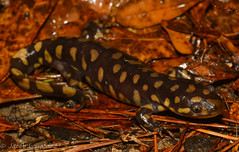
Amphibia General Characteristics
|
a) some spp strictly aquatic, some terrestrial
b) require water for reproduction c) developmental metamorphosis d) moist skin allows for gas exchange ex: tiger salamander |
|
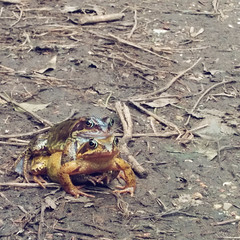
Amphibia Reproduction
|
a) external fertilization
b) eggs laid in water to prevent desiccation c) amphibians are oviparous, ovoviviparous, or viviparous ex: frogs |
|

Amniotes General Characteristics
|
a) organisms which begin inside an amniotic egg; contains specialized membrane to protect embryo
b) include reptiles, birds, and mammals c) specialized membrane nutrition, gas exchange, and waste removal d) shell prevents dehydration i) reptile= leathery shell ii) bird= calcaneous shell ex: turtle hatching |
|
|
Reptilia General Characteristics
|
a) earliest reptiles emerged 320 mya
b) do not require water for reproduction c) no developmental metamorphosis d) keratinized scales are water proof; prevents dehydration e) ectothermic: cannot maintain constant body temperature; dependent upon external heat |
|
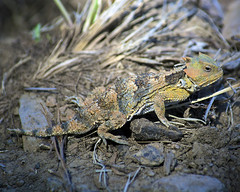
Reptilia Reproduction
|
a) internal fertilization
b) eggs laid on land due to amniotic egg c) oviparous and viviparous |
|
|
Reptilia Origins
|
diapsids: marine reptiles, pterosaurs, and dinosaurs
i) ornithischians: sluggish, cold blooded ii) saurischians: active, warm blooded |
|
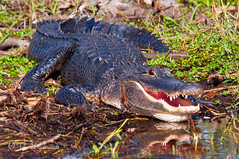
Reptilia: Crocodilia
|
-crocodiles, alligators
a) upturned nose for aquatic existence b) carnivorous c) inhabit warm, aquatic habitats |
|

Aves General Characteristics
|
a) internal fertilization and oviparous (egg layers)
b) 4 chambered heart c) endothermic- maintains constant body temperature; dependent on internal heat |
|

Adaptation for flight
|
1) wings and feathers (2)
2) pneumatic bones (air filled bones) 3) keeled sternum and flight muscles (2) 4) four chambered heart and endothermic 5) well developed vision centers (brain) 6) reduction of urogenital (urinating ) organs |
|
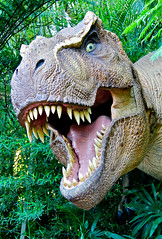
Aves origins
|
a) evolved from the theropod dinosaurs (T.Rex)
b) feathers evolved before flight (purpose) c) archaeopteryx emeerged 150 mya |
|
|
CHAPTER 34
|
MAMMALS
|
|

Mammals general characteristics
|
1) hair or fur
2) mammary glands and milk production 3) four chambered heart and endothermic 4) testes descended into a scrotum 5) limbs carried beneath body |
|
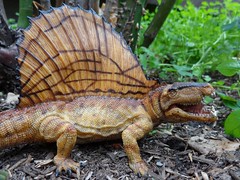
Mammalia Origins
|
a) synapsids- mammal like reptiles that were the precursors to mammals
1) dominant tetrapod during the Permian period 2) wiped out in Permian/ Triassic extinctions 225 mya ex: dimetrodon |
|
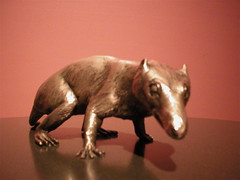
Morganucodon- Mammal
|
b) first true mammal to emerge during Jurassic period (135 mya); shrew-size
c) during the Mesozoic era (135-70 mya) 3 major lineages of mammals emerged |
|

Monotremes- Mammal
|
i. Echidna and platypus, found only in Australia and New Guinea
ii. Oviparous (producing eggs that mature and hatch after being expelled from the body, as birds, most reptiles and fishes, and the monotremes.), cloaca, poison spur (males) (egg laying) iii. endothermic, fur, milk (females) |
|

Marsupials Mammals
|
i. found in australia and n/s america
ii. higher metabolic rate than monotremes iii. endothermic, fur, milk (females) iv. offspring born prematurely, finish development in pouch |
|
|
Eutherians (placentals-humans) Mammals : possums and kangaroos
|
i. found wold wide
ii. endothermic, fur, milk (females) iii. longer gestation period than marsupials iv. offspring complete development in the uterus due to a more developed placenta |
|
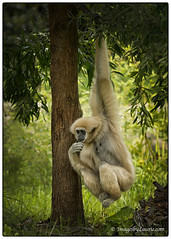
Derived characters of primates (chimpanzee)
|
a) hands and feet adapted for grasping
b) nails instead of claws c) large brain+short jaw= flat face d) well developed parental care and complex social behaviors ex: gibbon |
|
|
Primata: Old world Monkeys
|
i. Africa, Asia, Madagascar
ii. include monkeys and lemurs iii. arboreal and ground-dwelling iv. diurnal (active mainly during the day) ex: mandrill from Lion King |
|
|
Primata: New World Monkeys
|
i. South America
ii. Monkeys iii. Arboreal iv. diurnal ex: golden lion tamarin |
|
|
Primates General Characteristics (Tarsier)
|
a) earliest primates were arboreal (tree living)
b) hands and feet were adapted for grasping c) opposable thumbs d) binocular vision with good eye-hand coordination (helps with depth perception) |
|
|
Hominids (humans and their ancestors)
|
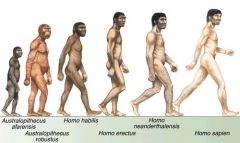
i. upright stance, bipedal
ii. reduced jaw bone and muscles iii. shorter digestive tract (because we eat meat and plants) iv. largest brain among hominoids v. language, symbolic thought, and more advanced tool use |
|
|
Bipedalism
|
a) 10 mya hominids began to rise
b) transitional modes of locomotion evolved c) changes in environment led to changes in locomotion d) bipedalism required less energy, freeing hands for other purposes |
|
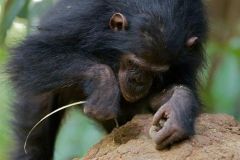
Human Evolution: Tool use
|
a) simple tool use observed in other hominoids (chimpanzees)
b) more complex tool use first observed in Australoithecines (2.5 mya); cutting tools ex: young chimpanzee termiting with a stick |
|
|
Human evolution: Sahelanthropus tchadensis (6-7 mya)
|
i. reduced canine teeth
ii. relatively flat faces iii. more upright and bipedal |
|
|
Human evolution: Australopithecus sp. (2-4 mya)
|
i. smaller heads- smaller brains; tool use
ii. Longer lower jaw iii. upright and bipedal |
|
|
Human Evolution: Homo habilis (1.6-2.4 mya)
|
i. larger brain- extensive tool use
ii. shorter jaw |
|
|
Human evolution: Homo erectus (1.5- 1.9 mya)
|
i. larger brain- extensive stone tool use
ii. shorter jaw, smaller teeth iii. longer legs, shorter fingers iv. sexual dimorphism |
|
|
Human evolution: Homo neanderthalensis (160k-195 kya)
|
i. larger brain- extensive stone/wood tool use
ii. thick boned, heavy iii. prominent brow ridge iv. not a direct ancestor of Homo sapiens |
|
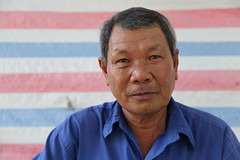
Human Evolution: Homo sapiens (30 k- 600 k)
|
i. emerged out of Africa, then N & E
ii. language, cognition iii. Slender body iv. no prominent brow ridge |

